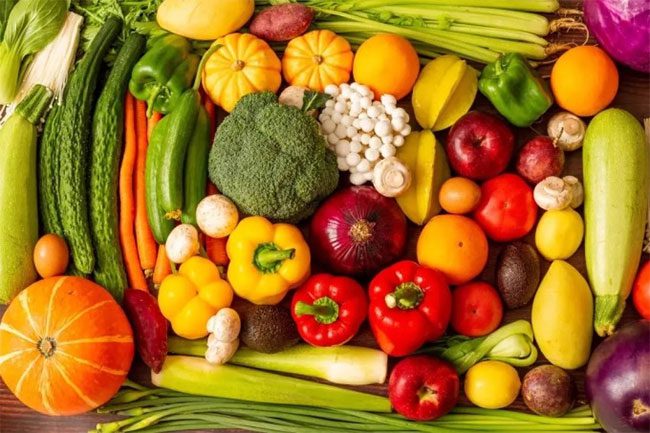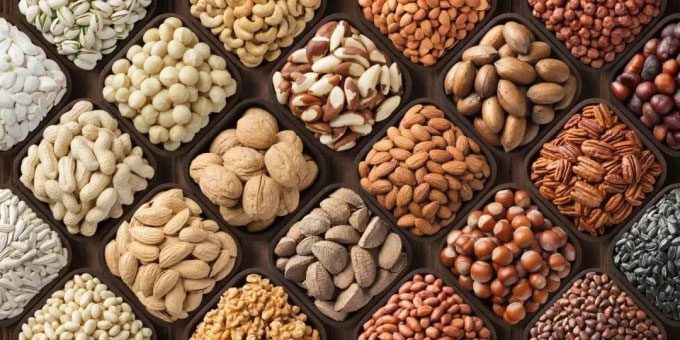Longevity is often linked to a diet rich in fresh vegetables, daily naps, and frequent social interactions.
Top 8 Common Characteristics of Long-Lived Individuals
1. Daily Consumption of Fresh Vegetables
Ensure that you consume no less than 300 grams of fresh vegetables daily, particularly dark leafy greens. Vegetables are rich in minerals such as potassium, magnesium, calcium, iron, carotene, and vitamins C, B1, B2, and more. They provide essential minerals and trace elements that support overall health and boost the immune system.

Vegetables help maintain health and improve immunity. (Image: Aboluowang).
Additionally, vegetables are high in fiber, which can accelerate the metabolism of glucose and lipids, helping to stabilize blood sugar, blood fat, and blood pressure. They also improve intestinal function, preventing constipation.
2. Daily Napping
Napping during the day helps repair the brain and physical health over time. It also allows you to temporarily set aside work and relieve stress, helping the brain return to a more focused state. However, nap durations should not be excessively long.
3. Walking
Walking is low-risk, convenient, and beneficial for health, assisting in weight loss. Just wear a comfortable pair of sneakers and take a few laps outside each morning and evening. Regularly moving your legs forward and swinging your arms is excellent for cardiovascular health and overall wellbeing.
4. Eating Seafood at Least Twice a Week
Protein from fish is of high quality and contains more nutrients compared to white meats like chicken and duck, and red meats like pork, beef, and lamb. Fish has shorter muscle fibers and a soft texture that is easier to digest and absorb. It also contains more vitamins and minerals than land animals. Moreover, fish is rich in bioactive components such as DHA and taurine.
Therefore, eating fish helps improve cardiovascular health, benefits brain function, reduces the burden on the stomach and intestines, protects vision, and is less likely to cause weight gain.
5. Limited Red Meat Intake
Red meat is an essential source of protein, rich in iron, vitamin B12, lecithin, niacin, and other nutrients. Moderate consumption of red meats like beef, lamb, and pork can be beneficial. However, excessive intake can lead to weight gain and abdominal obesity. It may also increase the risk of coronary heart disease, stroke, diabetes, elevated uric acid levels, hypertension, atherosclerosis, and certain cancers.
Therefore, it’s advisable to limit red meat to no more than three times a week, with serving sizes not exceeding 75 grams each time. Opt for lean cuts and minimize fat and organ meat intake. Additionally, pay attention to cooking methods; avoid frying and limit consumption of smoked and grilled red meats.
6. Snacking on Nuts

Nuts are high in fiber and a good source of linoleic acid. (Image: Aboluowang).
Compared to individuals who do not eat nuts regularly or at all, those who consume nuts a few times a week have a lower risk of mortality. Nuts are rich in fiber and serve as an excellent source of linoleic acid. Eating 28 grams of nuts daily can reduce the risk of coronary artery disease by 25%.
7. Sun Exposure
Increased sun exposure during the day leads to the production of more natural melatonin in the brain, which helps reduce anxiety, improve mood, and promote good sleep. Sunlight aids in calcium absorption, enhances vitamin D levels, strengthens bone health, and prevents osteoporosis.
8. Increased Social Interaction
Engaging in conversation is a mental exercise that hones reaction and language skills. Communication can also alleviate anxiety and relieve boredom, which is vital for health. The more you use your brain, the smarter you become.
Regularly participating in memory-challenging games and activities can slow down the aging process of the brain. For example, practicing letter rearrangement, learning a foreign language, and trying out a new dance can enhance blood flow and nutrient delivery to the brain, improving brain health and memory.


















































